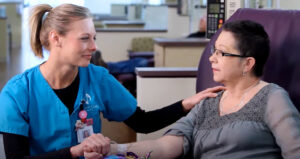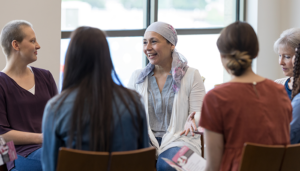Melanoma accounts for only about 1 percent of all skin cancers, but causes a large majority of skin cancer deaths. John Vander Zee, MD, a physician with the Nassif Community Cancer Center Melanoma and Advanced Skin Cancer Clinic shares more about melanoma prevention, risk factors and treatment.
Prevention:
What sun protection factor (SPF) do you recommend?
SPF 15 or higher. My advice is simple: Live your life to the fullest but take precautions. Get the umbrella out when you’re at the beach or the pool and don’t overdo it. Finally, get out of the tanning bed!
What can a patient expect from a full body scan?
Peace of mind. A good dermatologist can identify areas of concern as early as possible or anything that you need to keep a close eye on.
What other screening methods are available?
I encourage two other methods. First, use a digital camera and snap photos of your body annually. Store the memory card somewhere safe. This way, if a questionable lesion appears, you and your dermatologist can reference the photos. Second, remember the ABCDE rule:
- A is for asymmetry (one half of the mole does not match the other half)
- B is for border irregularity (the edges are ragged, notched or blurred)
- C is for color (the pigmentation is not the same)
- D is for diameter greater than six millimeters (about the size of a pencil eraser)
- E is for evolution, meaning a change in the mole’s appearance over time
Causes & Risk Factors
What are moles? Are there different types?
Moles are growths on the skin that are usually brown or black. They are formed by clusters of melanocytes, the pigmented cells responsible for your skin color. There are times when moles are not brown/black, sometimes they’re red or pink, and sometimes they’re not pigmented at all. For this reason it is important to have regular visits with a dermatologist.
Does a family history of skin cancer increase someone’s odds of developing melanoma?
Any family history increases the odds for developing melanoma.
What are some of the trends you see in melanoma patients?
Skin cancer is the fifth most common diagnosed cancer in the area. I also see it in younger populations, as young as 14 years old. 90 percent of cases are due to sun damage and the remaining 10 percent are from moles.
Treatment
What happens once a patient is diagnosed with melanoma?
Upon receiving their diagnosis of melanoma, the best course of action is to be seen in a clinic that specializes in Melanoma care, like the Advanced Melanoma and Skin Cancer Clinic at the Nassif Community Cancer Center here in Cedar Rapids. With the recent tremendous improvements in Melanoma treatments, such as Immunotherapy, patients are best treated in a setting with physicians dedicated to patients with Melanoma, with doctors who remain at the forefront of the advances.

John Vander Zee
MD
Dr Vander Zee runs a private practice, A John Vander Zee, MD, and is a practicing physician at the Community Cancer Center. He graduated from medical school at the University of Texas Southwestern in Dallas, Texas. He completed his residency in General Surgery at the University of South Alabama where he was the Chief Resident for one year, and his residency in Plastic and Reconstructive Surgery at the University of Texas. Dr. Vander Zee is board certified in Plastic Surgery by the American Board of Plastic Surgery.







